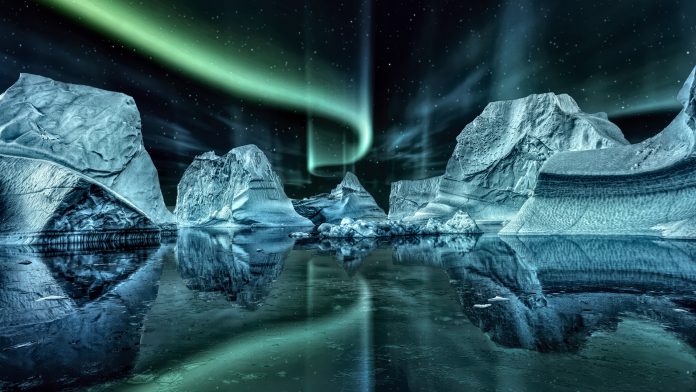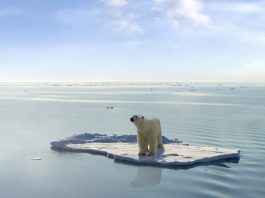Researchers at Hokkaido University have discovered that climate change in the tropical Pacific has temporarily decelerated ice melting rates in Greenland, resulting in slower summer warming.
While wider Arctic regions are suffering due to climate change, and are warming at a terrifying rate, over the last decade scientists have been perplexed as to why Greenland has presented trends of slower summer warming.
Mystified by this, researchers at Hokkaido University in Japan have analysed Greenland’s slower summer warming trend in an attempt to discover why this is taking place. Their observational analysis and computer simulations revealed that changes in sea surface temperature within the tropical Pacific Ocean, thousands of miles to the south, trigger cooler summer temperatures across Greenland.
The results, published in the journal Communications Earth & Environment, will help to improve future predictions of Greenland ice sheet formations and Arctic Sea ice melting in coming decades.
El Niño events
“The Greenland ice sheet is melting in the long run due to global warming associated with greenhouse gas emissions, but the pace of that melting has slowed in the last decade,” explained Hokkaido University environmental Earth scientist, Shinji Matsumura. “That slowing was a mystery until our research showed it is connected to changes to the El Niño climate pattern in the Pacific.”
El Niño is a natural, cyclic phenomenon that raises the water temperature in the central and east-central equatorial Pacific Ocean. Scientists understand that such large-scale changes alter atmospheric conditions elsewhere due to their association with powerful waves of air pressure called teleconnections. However, climate experts struggled to identify how the Pacific El Niño could cool Greenland climates in the summer, because easterly summer winds in the tropics usually prevent such teleconnections from forming.
The slowdown in Greenland’s summertime warming
In the new study, the research team accounted for recent changes in the Pacific El Niño event, which drove the warmer sea temperatures further North than usual. This took them beyond the influence of the Easterly wind and allowed atmospheric teleconnections that reach Greenland to form.
As a result, these teleconnections disrupt the atmospheric conditions and thus the weather around Greenland in the summertime. Specifically, they drive more intense cyclones, distributing colder air over the land. This explains the lower-than-expected temperatures and ice melting in the region. Temperatures and rates of ice sheet melting both peaked in 2012.
“The findings, and the slowdown in Greenland’s summertime warming, do not undermine the seriousness of climate change or the need to tackle greenhouse gas emissions,” Matsumura stresses.
Rather, they demonstrate how natural changes can act alongside the long-term global warming trend to vary local conditions. The slowdown in warming is local to Greenland, while the wider Arctic region remains one of the fastest warming locations on Earth.
El Niño events tend to be followed by similar but different natural climatic shifts called La Niña, in which sea surface temperatures drop. These events tend to bring higher temperatures to Greenland.
“We expect that global warming and ice sheet melting in Greenland and the rest of the Arctic will accelerate even further in the future due to the effects of anthropogenic warming,” Matsumura concluded.









